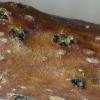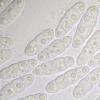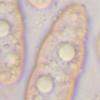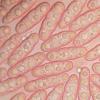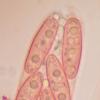
30-11-2025 12:53
 Edvin Johannesen
Edvin Johannesen
White short-stipitate apothecia found on thin twig

30-11-2025 10:47
 William Slosse
William Slosse
I recently found a collection of small Peziza sp.

27-11-2025 12:01
Thomas Læssøehttps://svampe.databasen.org/observations/10496727

27-11-2025 11:46
Thomas Læssøehttps://svampe.databasen.org/observations/10493918

17-09-2025 10:50
Heather MerryleesHi there!I am hoping for any advice on the identif

29-11-2025 08:40
 Andreas Millinger
Andreas Millinger
Hello,on a splintered part of a branch on the grou

28-11-2025 16:45
Nogueira HéctorNovember 23, 2025 Requejo de Sanabria (León) SPAI

25-11-2025 14:24
Thomas Læssøehttps://svampe.databasen.org/observations/10490522

27-11-2025 15:41
Thomas LæssøeSpores brownish, typically 4-celled; 26.8 x 2.4;

27-11-2025 11:31
Thomas LæssøeCollectors notes: Immersed ascomata, erumpent thro

Prosthecium platanoidis semble être une espèce américaine qui n'est pas congénerique avec celle-ci. Le nom correct de votre champignon semble être Calosporella innesii.

mostly 3-septate ascospores with small apical appendages
and has been transferred to Prosthecium by Wehmeyer (1941)
based on its phragmospores with apical appendages. This
generic classification has subsequently been commonly followed.
Barr (1978) argued that the correct epithet for the taxon
should be Prosthecium platanoidis due to priority, but the type
collection of this species is apparently not congeneric with the
current fungus (see notes above). The name to be applied for
the species is therefore C. innesii.
In the original description, Currey (1858) did not provide any
details about collections. There are numerous authentic collections
of the Currey herbarium in K, one of which is here
selected as lectotype. To ensure nomenclatural stability, a
recent well-developed specimen for which a culture is available
is here selected as epitype. The appendages can be seen well
in water mounts even from old herbarium specimens, but they
quickly disappear in KOH mounts.


Salut Andgelo,
Personnellement ça ne me gêne pas de l'appeler comme tu l'as fait.
Un des plus courants sur sycomore.
Alain

